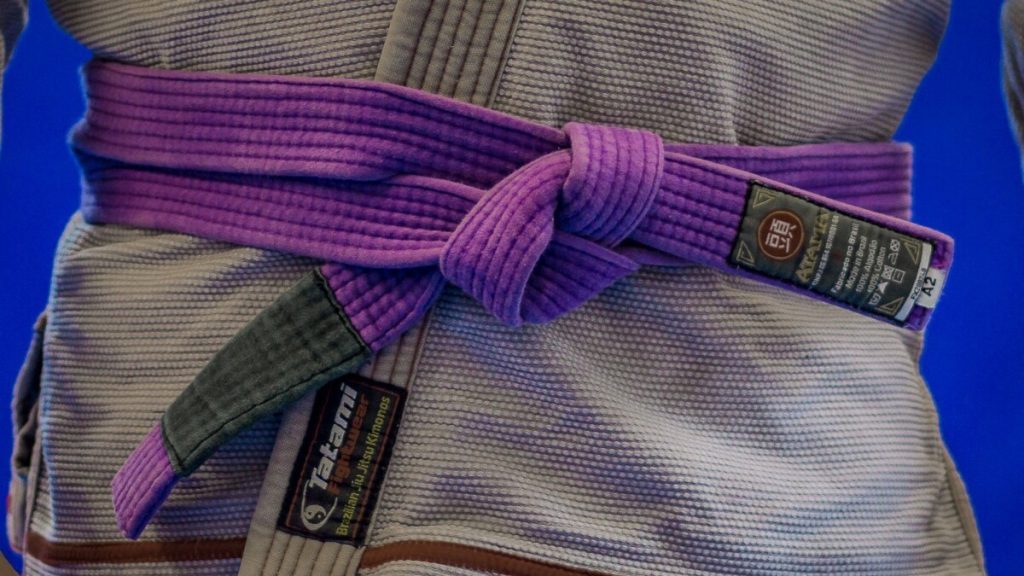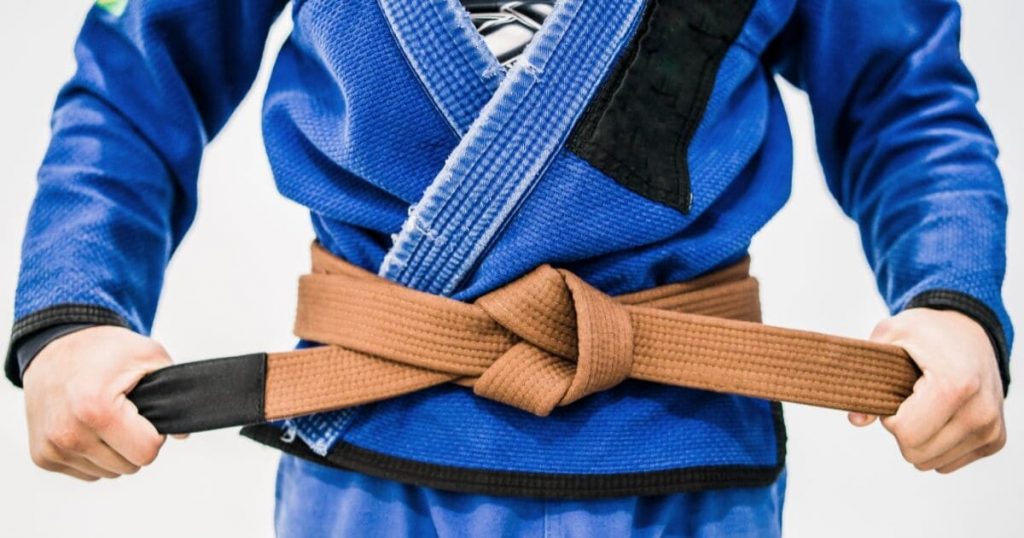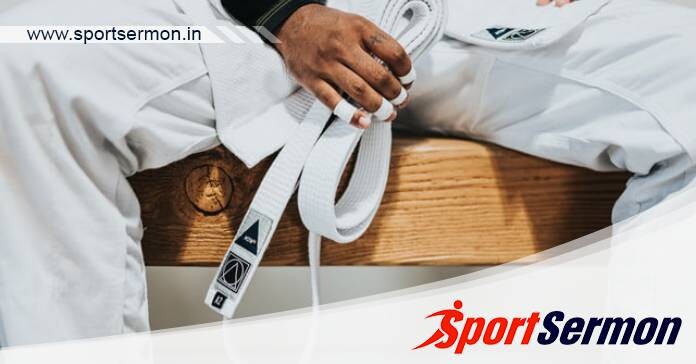Belt Ranks: Similar to other martial arts, Jiu-Jitsu tracks your development through coloured belts. Whatever level you are at right now, you undoubtedly want to know how long it takes to go to the next one and what makes it possible for you to advance.
Depending on how much practice you put in each week, it might take you ten years or longer to get a black belt. Because each level takes time, you may become disheartened. The strength of Jiu-Jitsu, however, is patience!
Because of its conservative stance, Jiu-Jitsu is among the most successful martial arts. This means that pupils are never promoted until they reach a level of proficiency that is greater or comparable to that of the competitors.
Before we go any further with our guidance, remember that the goal of Jiu-Jitsu is to live in the present rather than rush through the stages!
The Five Main BJJ Belt Ranks
There are five primary belt grades in Brazilian Jiu-Jitsu: white, blue, purple, brown, and black. Everyone starts at white, and very few ever make it to black. We’ve broken down each belt so you can understand what each level represents. Remember that there are no standards for BJJ belt ranks, and your gym could have different demands.
1. White Belt

It’s possible that you’ve seen videos online that focus entirely on surviving the first few months of BJJ white belt training. Most people who go onto the mat for the first time have never grappled before, even if some white belts have, therefore they will have to learn everything from scratch! White belts should concentrate on learning how to live after learning how to tie their belt.
Given that the majority of white belts will quit, “surviving” may be a more accurate phrase than most people think!
Entering the mat only to be repeatedly smashed might be discouraging, particularly if the person submitting you is smaller than you. Don’t worry, though; this is a common issue for novice practitioners. Being submitted by a smaller person than yourself is proof that BJJ training may be successful.
A white belt does not have to win all the time. Learning how to manage the pressure that is applied during sparring (rolling) should be your primary objective. Instead of attempting to grapple your opponent to submission, you may just focus on striking the stuff you learned about in class that day. Think of your role as successful if you manage to hold onto a position, hit a sweep, or escape a dire circumstance.
You might also be interested in reading this: Motivational BJJ Documentaries You Ought to See
2. Blue Belt

The blue belt has an age minimum, unlike the preceding level. Only those who are at least 16 years old are eligible to receive a Brazilian Jiu-Jitsu blue belt.
The blue belt requires a minimum age, unlike the preceding level. Only individuals who have completed 16 years of age are eligible to receive a Brazilian Jiu-Jitsu blue belt.
In actuality, most people need one to three years to advance to the next level. Because it is regarded as the most crucial of all the learning belts, students spend most of their time on this level.
At this level, students of Brazilian Jiu-Jitsu practise for many hours in order to acquire a broad range of technical knowledge and the ability to perform the moves efficiently.
3. Purple Belt

The purple belt is among the best and most entertaining belt categories in Brazilian Jiu-Jitsu. This is because, despite the fact that there is still a great deal to learn and process, it shows that you have managed to pick up enough skills and information to begin exploring and having fun!
A purple belt is typically considered to represent the halfway point of a student’s career and indicates that the student has dedicated a substantial portion of their life to martial arts and takes it seriously.
A person must be at least 16 years old to receive this belt. The official time required to reach this level is one to two years on this belt. It is generally accepted that practitioners with a purple belt are capable of mentoring pupils at lower grades.
The purple belt aims to have students proficient in advanced guard techniques such as deep half, spider, de la riva, and so on. They should also possess a deadly guard game, be able to perform many submissions from various mount positions, and execute multiple combo strikes.
4. Brown Belt

Before advancing to brown belt in the IBJJF, practitioners must first complete eighteen months at purple belt and be at least 17 years old. At this point, brown belts need to have honed their craft. It’s also important to dedicate time to honing the aspects of Jiu-Jitsu you’re not as acquainted with in order to get this belt.
Since the IBJJF only permits heel hooks and reaping at the brown belt rank, competing at this level might be scary. Guard passes are taught before leg locks in a lot of BJJ clubs. Before signing up for the competition, competitors should feel comfortable practising both leg assaults and defences.
5. Black Belt

Achieving the desired black belt level takes ten years on average. (Although BJ Penn and others have arrived considerably sooner.) In a gym, holding the level of a black belt confers genuine authority. Individuals approach you with inquiries about both simple and complex methods. It is said that this belt is the “heaviest” to wear.
Many teachers prefer to grant black belts exclusively to those whom they deem to possess excellent moral character. Blackbelt recipients in Brazil are frequently referred to as “professors.” It takes three years for each of the first three stripes to be granted. Each of the fourth, fifth, and sixth requires five years at the previous level.
What comes next after earning a black belt?
The Red and Coral belt ranks are actually, recognised by the IBJJF even if they are not mentioned above. “Master” and “Grand Master” are the titles that go with these rankings. Just 19 IBJJF red belts are now recognised, the majority of whom are members of the Gracie family. In August of 2021, Yvonne Duarte became the first female red belt recipient.
Red and Black (Coral) Belt
After receiving their sixth degree as a black belt, a practitioner can advance to a red and black belt with seven more years of study. To be eligible for a red and black belt, you had to have earned your black belt thirty-one years prior.
Red and White (Coral) Belt
A practitioner’s time to obtain increases with the number of degrees they have. A red and black belt may be obtained in just seven years, while a red and white belt requires ten years. This is the last level one may obtain before becoming qualified for a full red belt. There are just 24 red and white belts registered with the IBJJF at this time.
Red Belt
At the ninth degree, one is granted a complete red belt. Currently, only members of the founding Gracie family hold the 10th degree. A red belt is someone whose “influence and fame take them to the pinnacle of the art,” according to Renzo Gracie. You should really not put too much emphasis on attempting to earn this belt because most of it is just training time.
Conclusion
Along with conditioning, techniques, and drills, Brazilian Jiu-Jitsu’s success is primarily attributable to its grading and teaching procedures. The individual’s performance and skill level comprise one of the main pillars of grading. As a result, pupils receive grades based on how well they practice the martial art, rather than how much theory they are taught.
With any luck, this tutorial has improved your understanding of Brazilian Jiu-Jitsu and the procedures needed to move on to the next level. Feel free to browse our website further for further information!
This is a complete guide on BJJ belt ranks. Let us know your thoughts in the comment section below.

